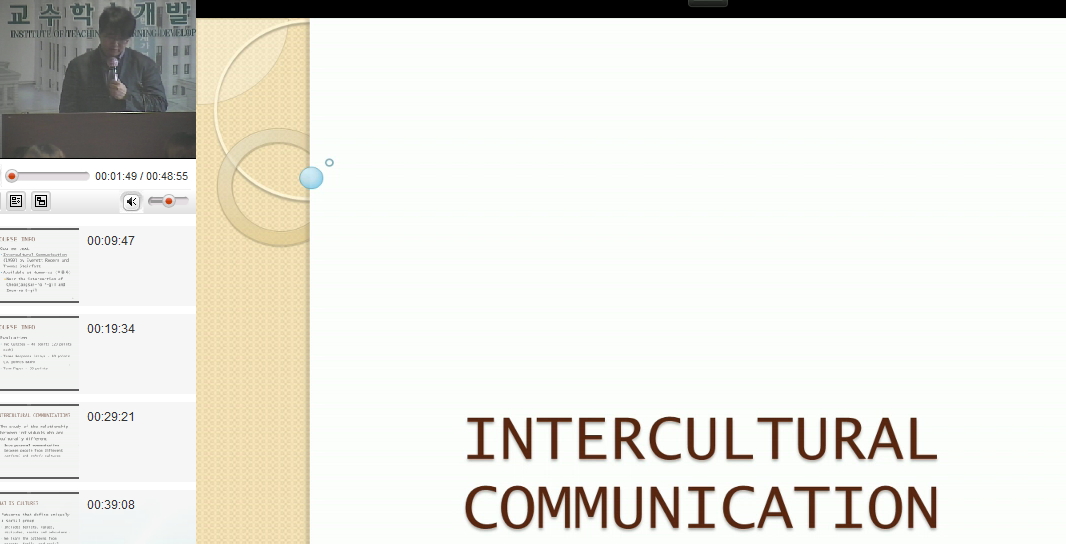언어는 문화의 중요한 구성 요소이자 문화를 생성하고 표현하는 주요 수단이다. 따라서 언어 간의 의사소통은 단지 단어의 음성이나 개념적 의미에 대한 이해뿐만 아니라 서로 다른 언어를 ...
http://chineseinput.net/에서 pinyin(병음)방식으로 중국어를 변환할 수 있습니다.
변환된 중국어를 복사하여 사용하시면 됩니다.
- 中文 을 입력하시려면 zhongwen을 입력하시고 space를누르시면됩니다.
- 北京 을 입력하시려면 beijing을 입력하시고 space를 누르시면 됩니다.
https://www.riss.kr/link?id=A106565129
- 저자
- 발행기관
- 학술지명
- 권호사항
-
발행연도
2020
-
작성언어
Chinese
-
주제어
문화 간 의사소통 ; 붉다(?) ; 연상적 의미 ; 연상일치 ; 연상대응 ; 연상충돌 ; 연상충격 ; 직역법 ; 대체법 ; 직역가주법 ; 감색의역법 ; Intercultural communication ; Red ; Associative meaning ; Associative overlap ; Associative correspondence ; Associative conflict ; Associative shock ; Literal translation ; Substitution method ; Literal translation with annotation ; Free translation with subtraction color
-
등재정보
KCI등재
-
자료형태
학술저널
-
수록면
187-230(44쪽)
- 제공처
- 소장기관
-
0
상세조회 -
0
다운로드
부가정보
국문 초록 (Abstract)
언어는 문화의 중요한 구성 요소이자 문화를 생성하고 표현하는 주요 수단이다. 따라서 언어 간의 의사소통은 단지 단어의 음성이나 개념적 의미에 대한 이해뿐만 아니라 서로 다른 언어를 지탱해 주는 문화 간의 의사소통 과정이라고 보는 것이 더 타당할 것이다. 문화 간 의사소통 상황에서는 상대방의 언어만 이해하고 활용하는 것에서 나아가 목표 언어를 바탕으로 하여 상황에 맞는 의사소통 방법을 파악해야 한다.
언어를 구성하는 어휘 체계 중에 색채어(色彩词)는 사회와 문화 공동체의 특성을 생동감 있게 표현해 주며, ‘비연속적’인 형식으로 자연 속의 연속적인 색채들을 반영한다. 그뿐만 아니라 색채어 또한 개인적 정감을 드러낼 수 있으며 이를 통해 문화간의 차이도 쉽게 파악할 수 있다. 따라서 본 연구에서는 ‘문화 간 의사소통’이라는 시각에서 출발해서 한⋅중 양국 문화에 대표적인 색채어로서의 ‘붉다’와 ‘红’이 지닌 연상적 의미를 비교하고자 한다. 그 결과에 따라 문화 간 의사소통을 원활하게 진행 할 수 있게 하는 몇 가지 색채어 번역 방안을 제시하는 데에 목적을 두었다.
이 논문에서는 ‘어원적 의미’, ‘개념적 의미’, 그리고 ‘연상적 의미’ 이 세 가지 측면에서 한국어 ‘붉다’와 중국어 ‘红’의 의미를 비교하였으며, 심도 있게 두 색채어휘의 연상적 의미 간의 대응 관계를 각각 분석하였다. 이러한 대응 관계를 ‘연상일치(联想一致)’, ‘연상대응(联想对应)’, ‘연상충돌(联想冲突)’ 그리고 ‘연상충격(联想冲击)’ 4가지 기준으로 정리할 수 있었으며, 각 연상 관계에 따른 번역법은 ‘연상일치에 따른 직역법(直译法)’, ‘연상대응에 따른 대체법(代替法)’, ‘연상충돌에 따른 직역가주법(直译加注法)’, 그리고 ‘연상충격에 따른 감색의역법(减色意译法)’ 총 네 가지를 제시하였다.
다국어 초록 (Multilingual Abstract)
Language is a significant component of culture, and also a main method of generating and expressing culture. Therefore, the communication between languages is not only the understanding of phonetic or literal meaning, but also the process of intercult...
Language is a significant component of culture, and also a main method of generating and expressing culture. Therefore, the communication between languages is not only the understanding of phonetic or literal meaning, but also the process of intercultural communication. Under the circumstance of ‘intercultural communication’, it not simply requires the understanding of the target language, but further emphasizes that on the basis of making flexible use of the acquired language, both sides are more active and appropriate to select the suitable communication mode according to the understanding of the target culture.
In the vocabulary formation system, color words vividly reflect the characteristics of social and cultural community. It expresses the sequential colors in natural world in the form of ‘non-continuity’ and express individual feelings at the same time, which reflects the characteristic of cultural community.
As a result, from the specific perspective of ‘intercultural communication’, this paper will discuss the similarities and differences of associative meanings between the most representative color words in Korean and Chinese cultures, the associative meaning of the most representative color words, ‘붉다’ and ‘Hong’ in South Korea and China, thus seeking for several translation schemes that can promote the smooth progress of intercultural communication.
This paper compares Korean ‘붉다’, Chinese ‘Hong’ and other color lexical groups related to red from three aspects of ‘etymology’, ‘basic meaning’ and ‘associative meaning’ and deeply analyzes the corresponding relation between associative meanings of red color in two countries. According to the analysis, there are 17 kinds of associative meanings in Korean related to ‘붉다’, including 7 kinds of affirmative meanings and 10 kinds of negative meanings. By contrast, there are 17 kinds of associative meanings related to ‘Hong’ in Chinese, including 9 kinds of affirmative meanings and 8 kinds of negative meanings. According to the results of various meanings through deep comparison, four corresponding forms of associative meaning ‘associative overlap’, ‘associative correspondence’, ‘associative conflict’ and ‘associative shock’ are sorted out and summarized in this study. At the same time, based on this, this paper proposes four translation methods to promote intercultural communication, that is, ‘literal translation based on associative overlap’, ‘substitution method based on associative correspondence’, ‘literal translation with annotation based on associative conflict’ and ‘free translation with subtraction color based on associative shock’, and lists the specific translation examples according to the characteristics of each translation method.
목차 (Table of Contents)
- 국문제요
- 1. 绪论
- 2. 基于‘文化沟通’视角的韩⋅中基本色彩词比较研究的理论基础
- 3. ‘붉다’与‘红’的含义对比
- 4. ‘붉다’与‘红’的翻译方法
- 국문제요
- 1. 绪论
- 2. 基于‘文化沟通’视角的韩⋅中基本色彩词比较研究的理论基础
- 3. ‘붉다’与‘红’的含义对比
- 4. ‘붉다’与‘红’的翻译方法
- 5. 结语
- 參考文獻
- Abstract
동일학술지(권/호) 다른 논문
-
兪吉濬 《西遊見聞》의 언어자본 고찰 ― 序⋅備考⋅年譜를 분석대상으로
- 중국어문논역학회
- zhaotailian
- 2020
- KCI등재
-
基于‘文化沟通’视角的韩⋅中基本色彩词‘붉다’和 ‘红’的含义对比及翻译方法研究
- 중국어문논역학회
- 왕녕
- 2020
- KCI등재
-
- 중국어문논역학회
- 김태연
- 2020
- KCI등재
-
사가르(Sagart)의 《상고 중국어의 어근(The Roots of Old Chinese)》 중 어휘의 어원(4)
- 중국어문논역학회
- 노혜정
- 2020
- KCI등재






 DBpia
DBpia





